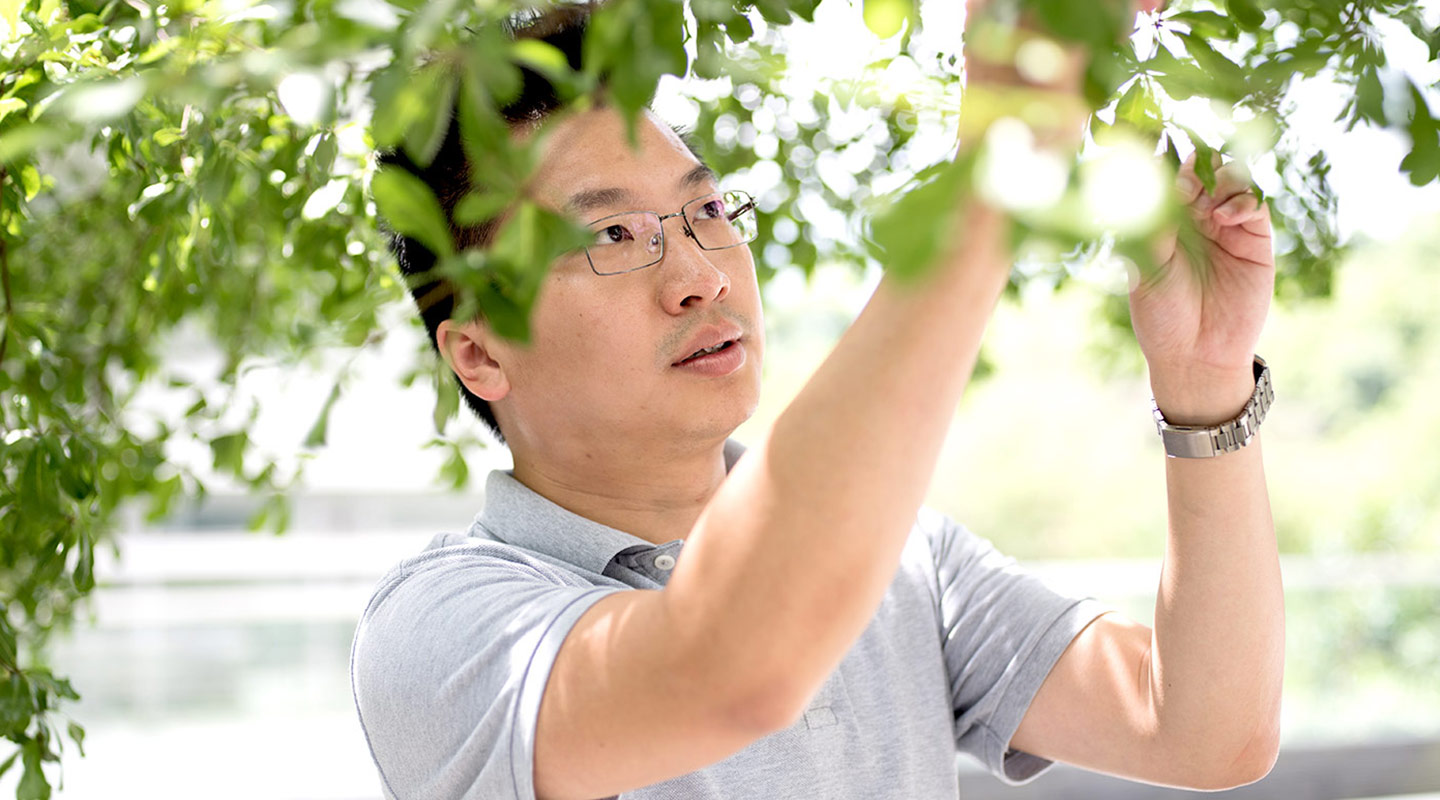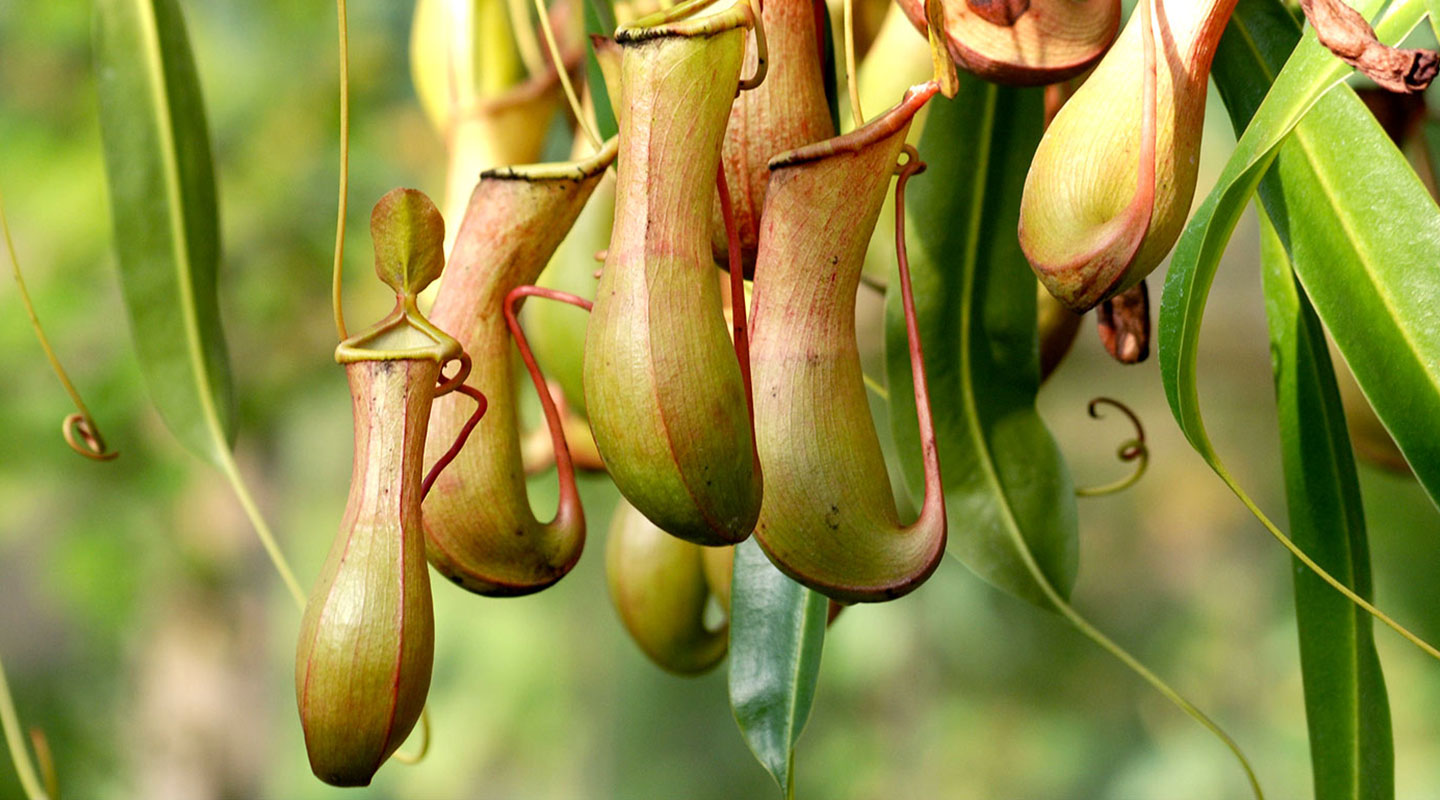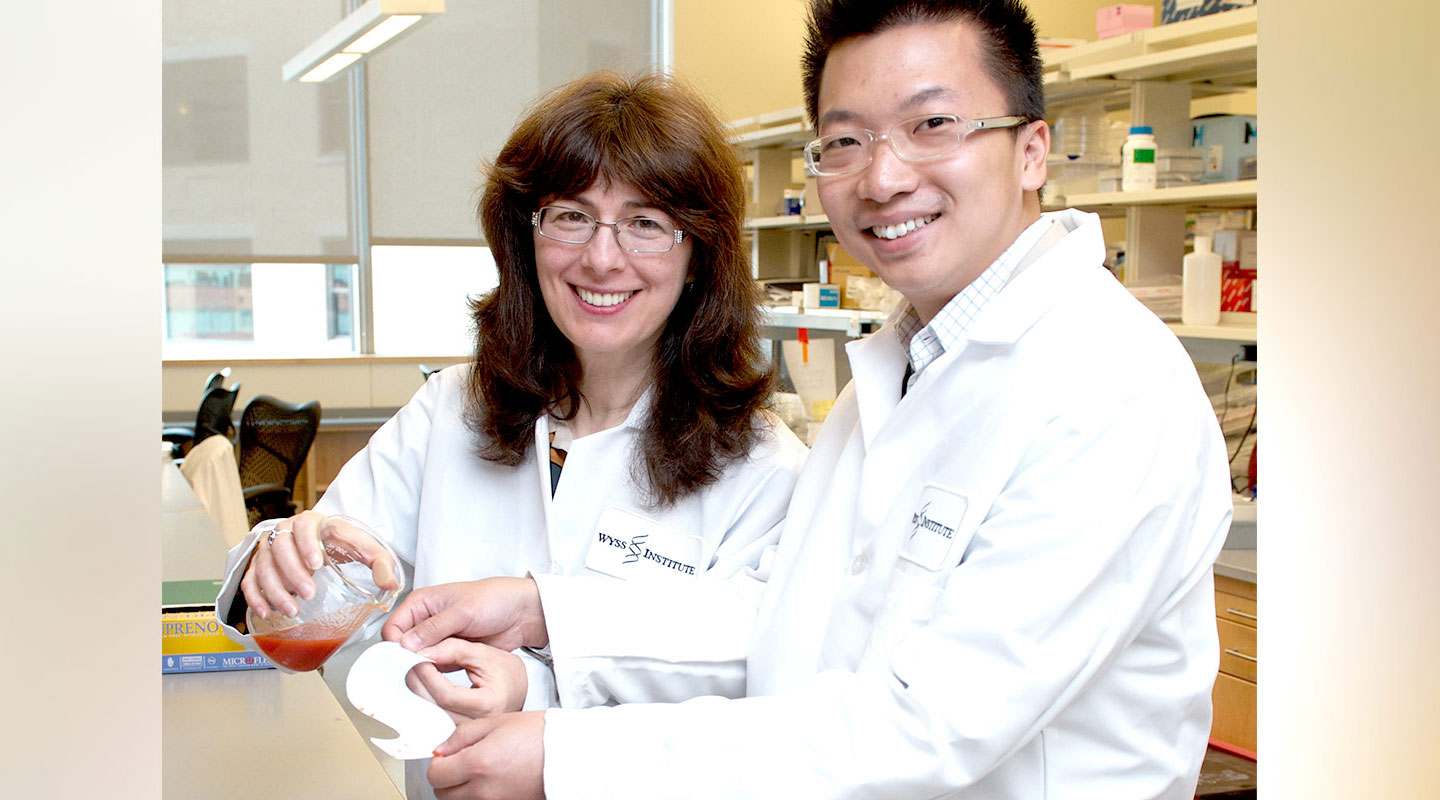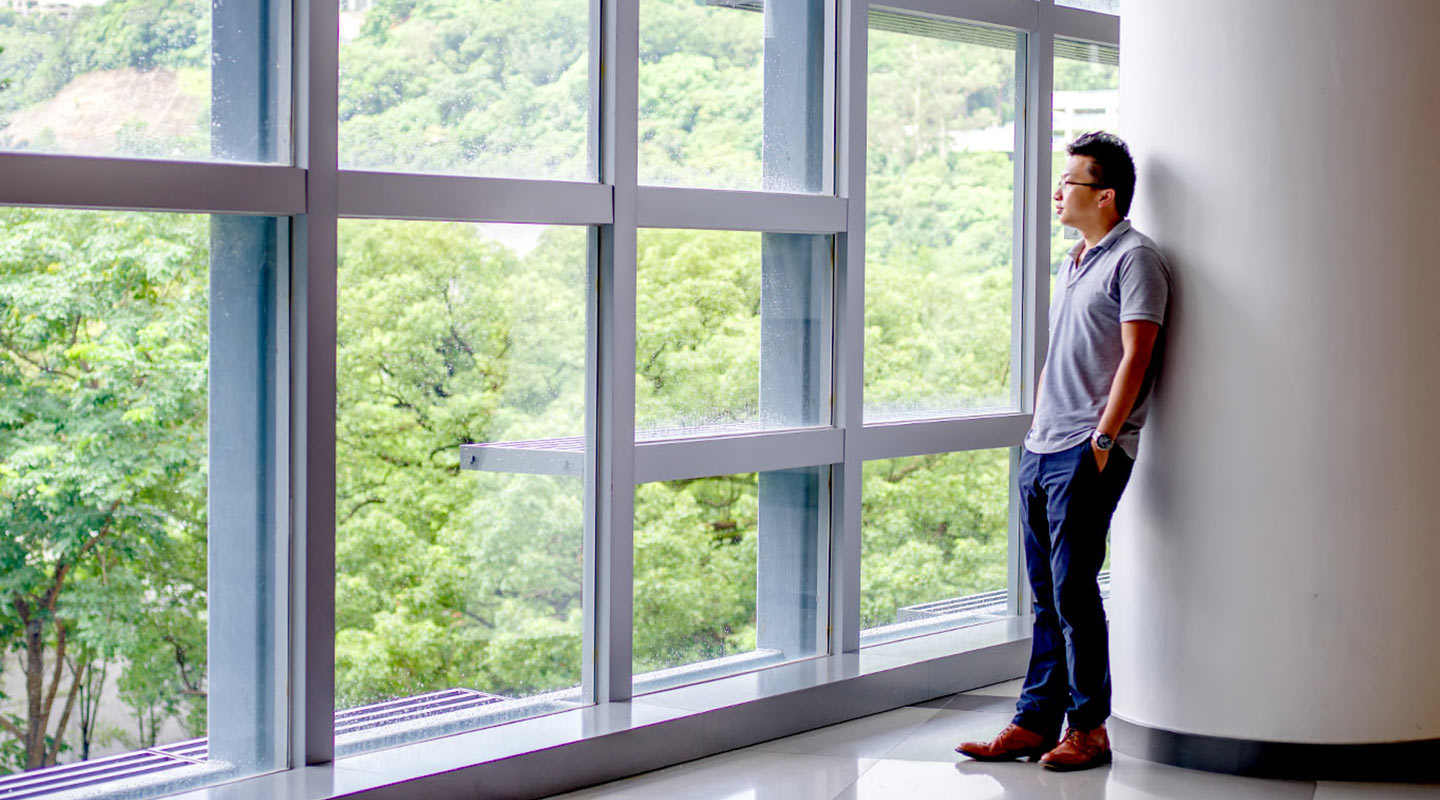Dear readers, With the launch of e-newsletter CUHK in Focus, CUHKUPDates has retired and this site will no longer be updated. To stay abreast of the University’s latest news, please go to https://focus.cuhk.edu.hk. Thank you.
From Nature to Nanotech
Wong Tak-sing imitates nature to give flesh to the future

Wong Tak-sing is an engineer who takes a leaf out of nature’s book when looking for solutions to human problems. In 2014, he was named by MIT Technology Review as one of the top innovators under the age of 35 with the invention of Slippery Liquid-Infused Porous Surfaces (SLIPS), a liquid-repellent coating modelled after the carnivorous pitcher plant that uses its slippery leaves to capture prey. The invention, hailed as ‘one of today’s most intriguing and potentially useful new materials’, had its genesis 17 years earlier in the Faculty of Engineering of CUHK.
In 2000, when Tak-sing was still a freshman at the then Department of Automation and Computer-Aided Engineering, he came across nanotechnology in the Basic Electronics course taught by Prof. Li Wen-jung. ‘On the last day of class, Professor Li showed us a range of close-up photos taken under an electron microscope. They totally blew me away. One of them had an ant holding on to a delicate gear that was even smaller than the bug itself. I was immensely intrigued by the idea of creating devices that tiny. After class I drafted a proposal on how I intended to make a micro-scale flying robot, and e-mailed it to Professor Li.’

The professor immediately took a shine to this assiduous and aspiring student, and soon introduced him to laboratory research. ‘It was rare for an undergraduate, and even rarer for a freshman, to get into a research group. In retrospect, I wonder why Professor Li would trust me in not messing up any of his state-of-the-art research equipment,’ said Tak-sing, half-jokingly.
Upon graduation, he chose to move thousands of miles from home to earn a doctorate at UCLA under the supervision of Prof. Ho Chih-ming who was once the PhD advisor of Li. ‘I had always been looking up to Professor Li and admiring his style of mentorship. It was really fortunate that I could follow in his footsteps and learn from my mentor’s mentor,’ said Tak-sing.
By the end of his studies at UCLA, Tak-sing started to take an interest in biomimicry—a discipline that looks to nature for clues in solving technical conundrums. ‘I came to realize that nature is a master of nanotechnology. From the sticky toes of a gecko to the water-repellent leaves of a lotus leaf, many creatures in the natural world utilize micro- and nanostructures to perform special functions, and that became the topic of my PhD thesis.’
In 2010, Tak-sing moved to Boston to work at the Wyss Institute for Biologically Inspired Engineering at Harvard University. A year later, under the guidance of his postdoctoral adviser Joanna Aizenberg, he developed the non-stick surface SLIPS. Just like its sibling in the plant world—the pitcher plant that lures unsuspecting ants into its cupped leaves too slippery to escape from—SLIPS repel any type of liquid, from oil to water to blood, and prevent organisms like bacteria and barnacles from sticking.

SLIPS consist of nanostructured substrates infused with lubricating fluid. The lubricant is locked in place by the substrates and forms a stable, frictionless layer. Tak-sing compared the repellent process of SLIPS to hydroplaning. ‘In a rainy day when you drive on a wet road, the tyre is separated from the road surface by a thin film of water and loses traction, sending your car skidding along the water surface.’
In terms of durability, SLIPS coating even outperforms its natural counterparts due to its self-healing attribute. ‘When an object impacts a liquid, an indent is made on the liquid surface. But once the object is removed, the fluid nature of the water allows it to refill the space that was occupied. Since SLIPS are coated in liquid, they react similarly,’ explained Tak-sing.
The range of possible applications for the novel material is endless: it could be used to coat medical devices such as implants to decrease the potential for bacterial contamination, cover the hull of a ship to prevent barnacles from adhering to the surface, and keep aircrafts free of ice to enhance safety and on-time performance. In layman’s terms, we may all cheer when we can liberate the very last dollop of ketchup out of the bottle, or the last bit of toothpaste out of the tube, without sore fingers.
Now an Assistant Professor of Mechanical Engineering at The Pennsylvania State University where he heads the Laboratory for Nature Inspired Engineering, Tak-sing hopes to use nature-inspired technologies to address some of the grand challenges in the 21st century, particularly in water sustainability. It involves, for example, developing non-sticky toilet bowls that require very little water to flush, as well as creating super water-condenser to collect clean water from thin air.

This April, Tak-sing was named one of the 25 Distinguished Alumni by CUHK’s Faculty of Engineering on the occasion of its silver jubilee. ‘I would never imagine that I would make the list. The Faculty has nurtured numerous talent in the past 25 years. Many of them are making seminal contributions in various sectors. I am honoured to be chosen alongside other highly accomplished alumni.’
He pointed out that as recently as 15 years ago, nanotechnology was considered hardly applicable except, for example, the manufacturing of integrated circuit. ‘But I saw it differently. The natural world is using nanotechnology on a daily basis to solve complex problems, and the strategies have stood billions of years of field-testing. Nature is full of ready solutions to many of the challenges we encounter. Nanotechnology gives us tools to replicate the evolutionary wisdom and make superhuman powers not so superhuman.’
By Christine N., ISO